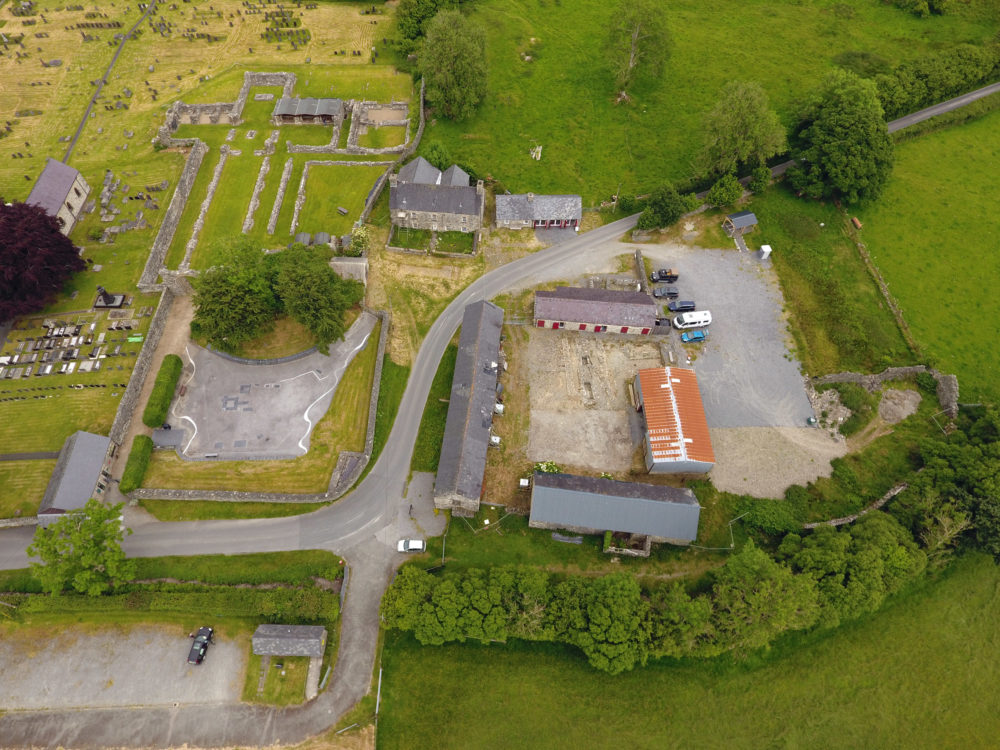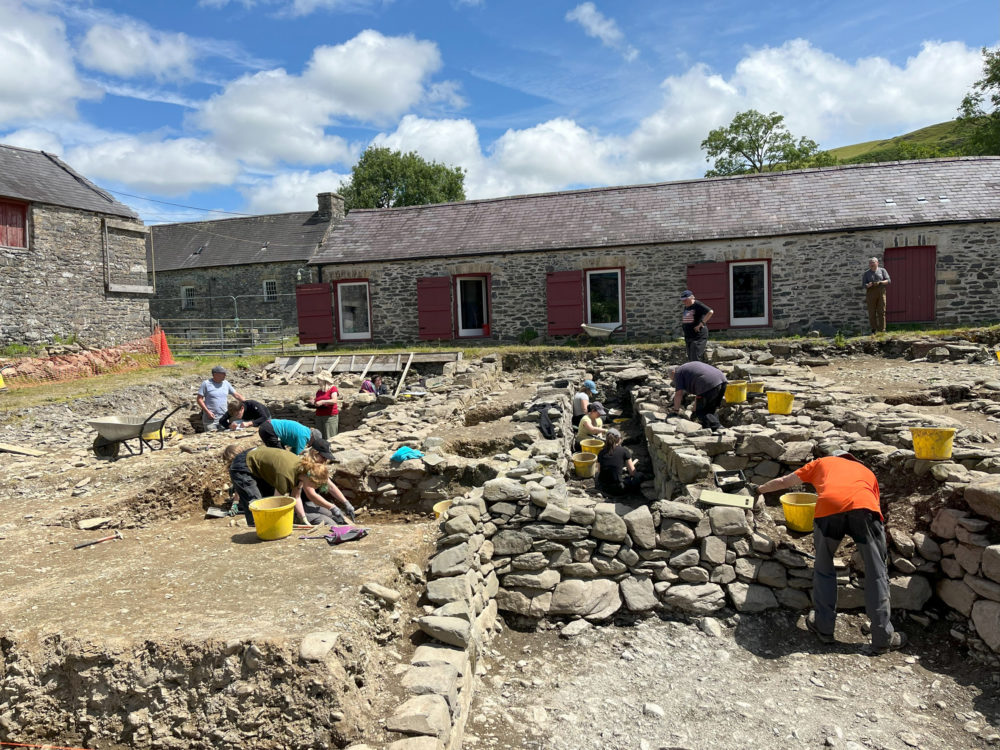Radiocarbon dating suggests human activity at site of Cistercian abbey dating back to Mesolithic Era

Excavations at a former Cistercian abbey in mid Wales have uncovered material dating back 7,500 years.
The excavations, which were part of a public field school, have been taking place over the past five years and are focused on the courtyard of Mynachlog Fawr farm buildings which are being refurbished by the Strata Florida Trust.
A number of structures and features under the courtyard have been revealed, including a major aqueduct and medieval buildings, which once formed part of the Cistercian Abbey, along with some earlier structures.
Charcoal samples
Following last year’s annual archaeology field school, 11 charcoal samples were collected from the site and were sent to specialists for radiocarbon dating.
Five are from the late 12th and 13th centuries, dating from the time of the medieval Cistercian monastery.
A further five samples, relating to structures at the site, date from between 951AD and 1172AD and seem to be associated with flagged surfaces and stone walls, predating the arrival of the Cistercians on the site in 1184.
They provide strong evidence to support the theory of pre-Cistercian use of the site and potentially an earlier church or monastery.
The final sample dates from between 5920 and 5758BC, a staggering 7,500 years ago in the Mesolithic Era.
Hunter-gatherers
The Mesolithic Era was the period between the Upper Paleolithic and Neolithic eras when people when people were hunter-gatherers who moved around in search of food. In Britain, the Mesolithic era lasted from about 15,000 BC to 2,500 BC
How the site was used prior to the arrival of the Cistercians is still unclear, but continued excavations and the use of techniques, such as radiocarbon dating, will help with further research of the history of the site.

Bookings are now open for this year’s Strata Florida Archaeology Field School which will run from June 16 to July 13 this year.
Places are available for one to four week courses and digger day experiences. A range of bursaries are also available including one for students.
For more information or to book a place at the school, visit the website or email to [email protected]
A free ‘Mynachlog Fawr Exhibition’ is also being held in a building on the site, giving visitors of all ages a chance to explore the social and agricultural history of the house and the local area.
The exhibition also contains an interactive Virtual Histories educational experience, which allows visitors to travel back to see a day in the life of Mynachlog Fawr farm in 1947 and the abbey in 1238.
Support our Nation today
For the price of a cup of coffee a month you can help us create an independent, not-for-profit, national news service for the people of Wales, by the people of Wales.





There were two different incursions of Mesolithic occupation of Wales. It was driven by climate change. We have the Gower occupation of around 10,000BC during the first warm period, Cat Cave. Then we have a big downturn in temperature from 9,400 to 9,200 BC, the Mesolithic abandonment. However, this report tells us radio-carbon dating of the first settlement at Ystrad Fflur is after this cold abandonment of the Bolling–Allerod Interstadial. A re-settlement during a period much warmer than today, starting around 8,000BC. The big question is why did they choose to settle at Ystrad Fflur?